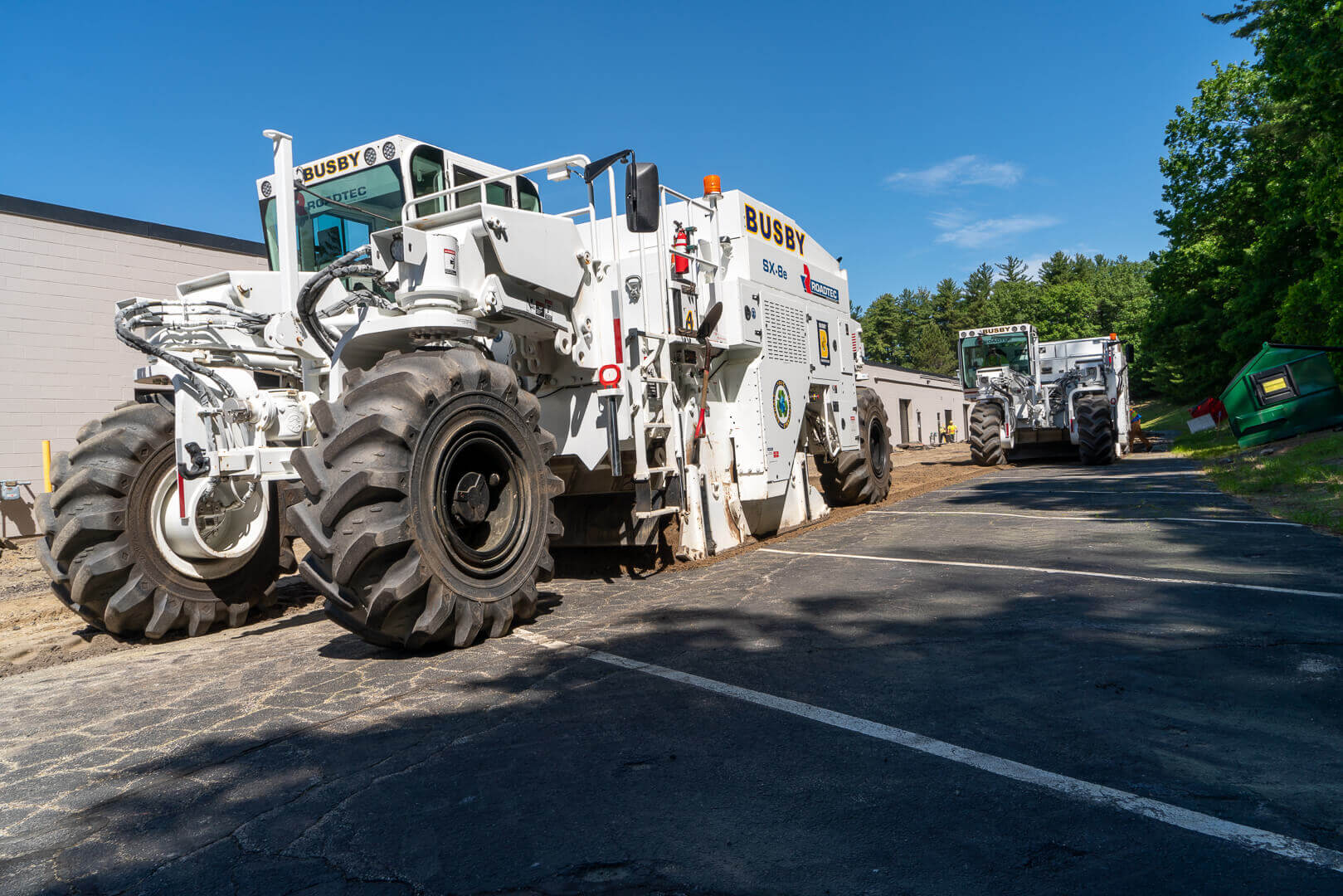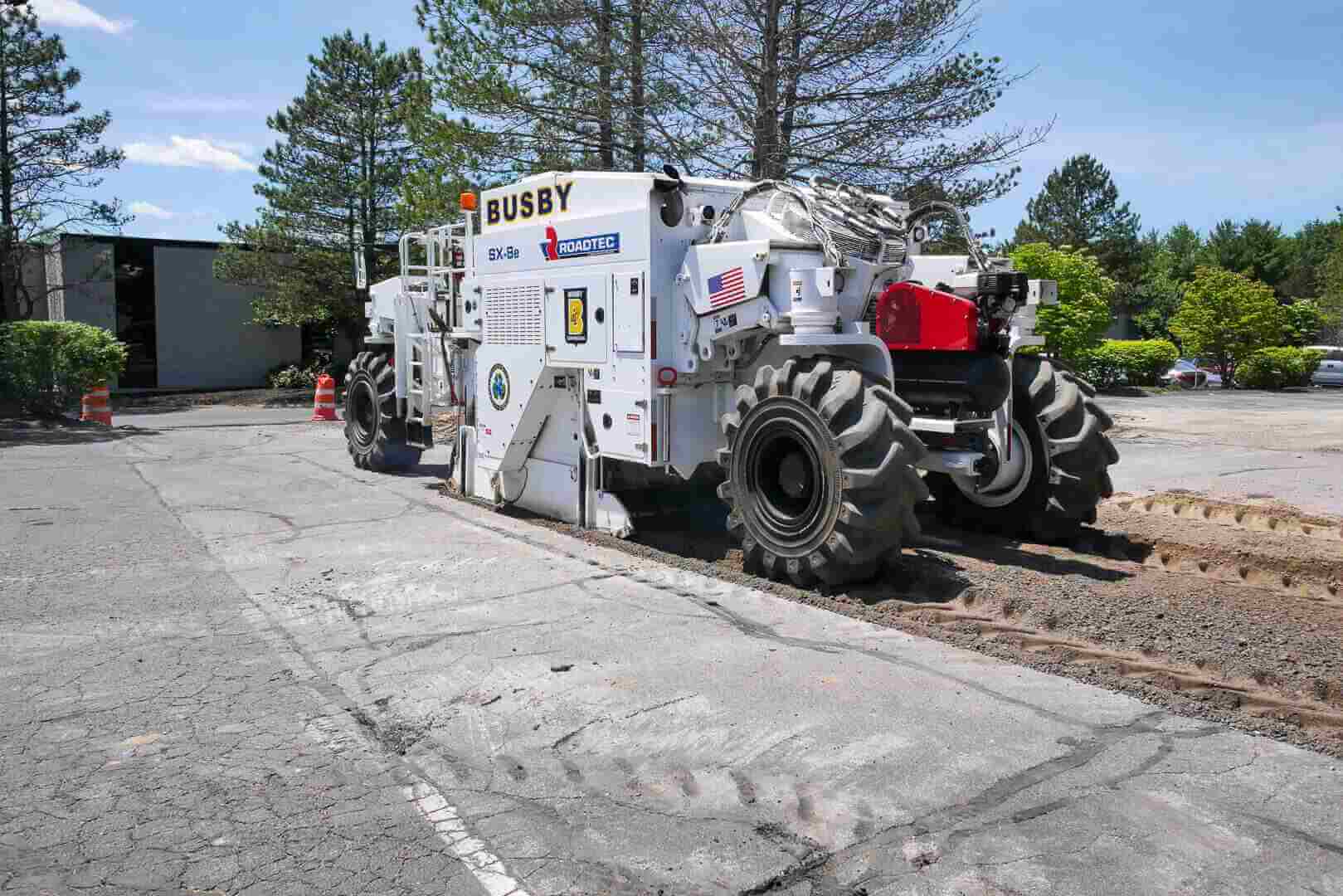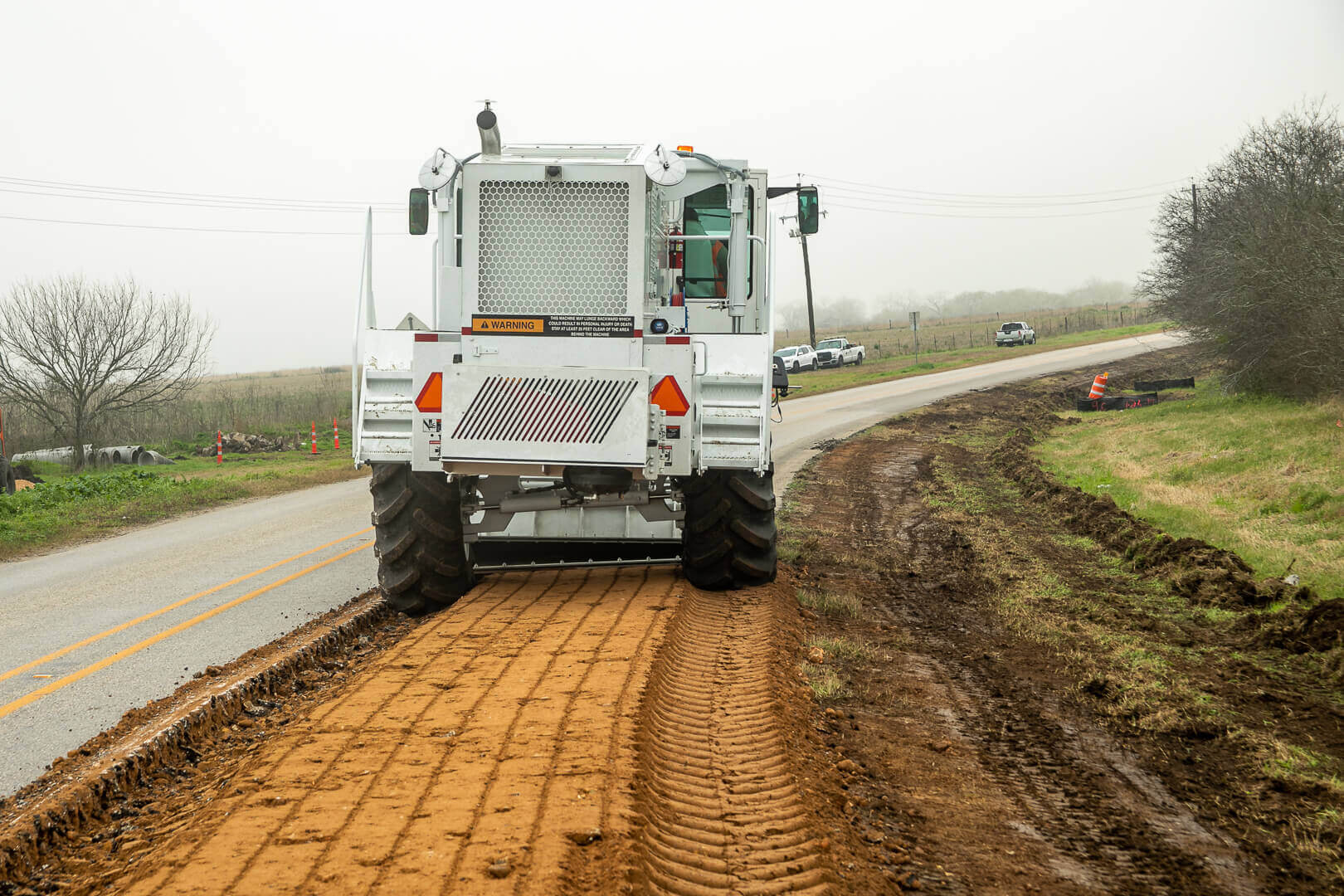Road Reclamation
Asphalt reclamation, also known as road reclamation or full depth reclamation, is a cost-effective method of pavement rehabilitation. The full thickness of the asphalt surface and a portion of the underlying base is uniformly pulverized and graded to serve as the base for a new road. Additives such as cement or asphalt emulsion are often incorporated to increase strength. The result is a homogenous layer with improved structural capacity.
What are the Benefits of Road Reclamation?
Reclamation saves time. Transporting material to a landfill then replacing it with new material is not only costly, but it is also time-consuming and wasteful.
Reclamation saves resources. Rather than source new materials, reclamation uses the existing materials. This recycling is more beneficial to our environment, both in terms of reusing material and in terms of reduced fuel costs.
Reclamation creates more durable roads. The stronger base created during reclamation creates a solid foundation for longer-lasting, more durable roads that don’t suffer from cracks, holes or ruts. Better roads mean safer travels, less time in traffic and reduced road construction costs.




